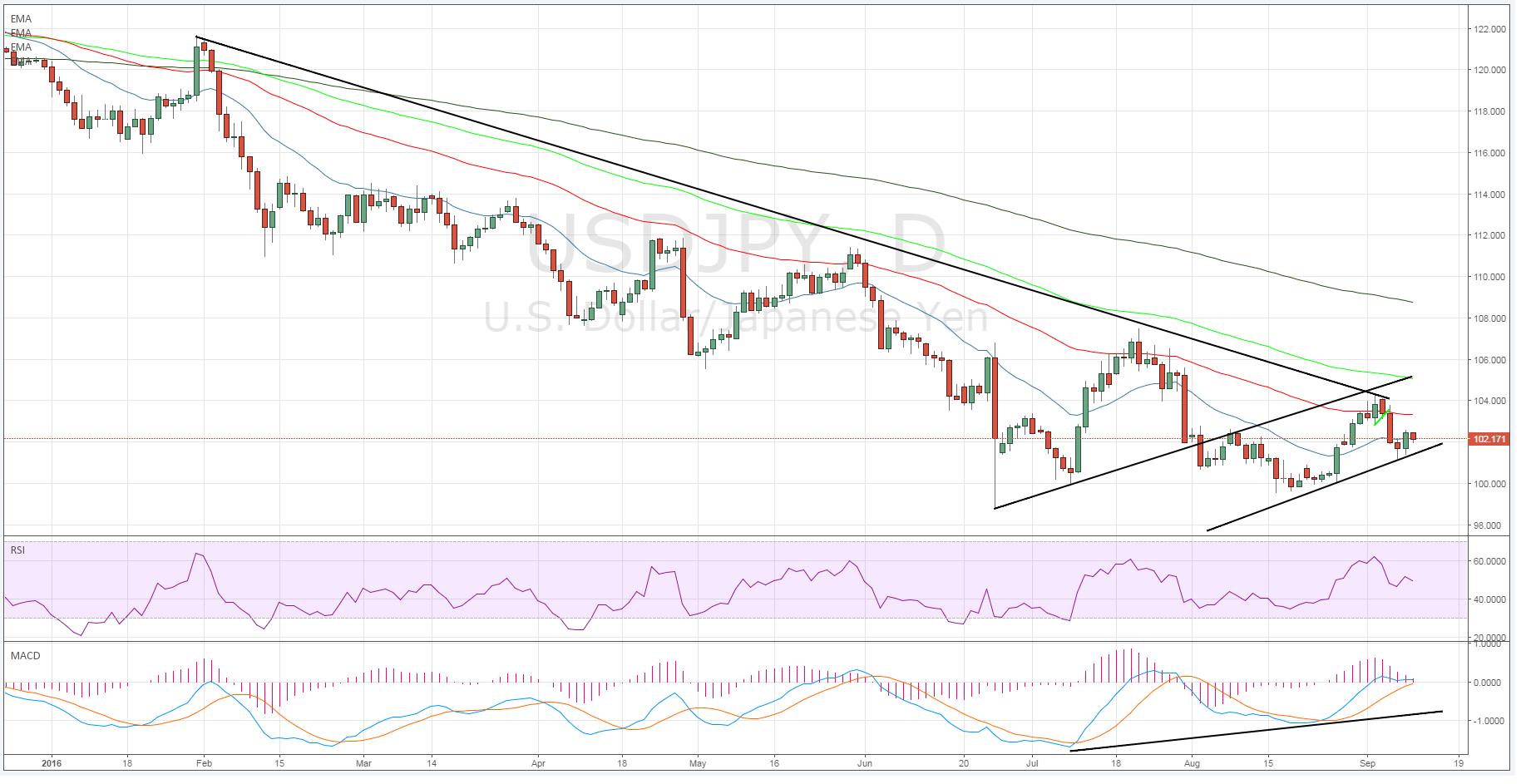Key Points:
- MACD divergence evident on daily timeframe.
- Price action trades within ascending channel.
- Upside pressure continues to build.
The embattled dollar-yen has largely been under the grips of a long term bearish trend that has seen the greenback steadily depreciate against the yen. The decline has surprised quite a few analysts given the very real structural issues that the Japanese economy is currently suffering. However, the pair might have finally found a bottom over the last few weeks as some encouraging signs appear on the daily charts.
In particular, price action looks to currently be trading within an ascending channel and the pressure subsequently looks to be building for a challenge. An initial test and subsequent pullback from the bearish trend line occurred last week with a hammer appearing during the decline. Since then the RSI Oscillator has been ticking steadily higher, within neutral territory, and the buying pressure has continued to build.

Additionally, there is some divergence evident within the MACD indicator as the signal lines have been continuing to trend higher whilst price action has actually declined in a wave like fashion. Subsequently, there are plenty of technical reasons to suggest that a breakout from the current trend is likely to occur in the near term. At the very least, it is probable that we will see a topside move back towards the 23.6% Fibonacci level at 104.15, and to 107.47 in extension (medium term time frame).
However, despite the strong technical indicators, there are some complicating factors which could potentially derail the move. In particular, there is plenty of uncertainty surrounding the US Federal Reserve’s direction in the coming FOMC meeting, which is likely to increase as we move closer to decision time. Therefore, volatility is almost assured as the meeting nears, especially considering the relatively poor level of expectation set by the central bank. Subsequently, even an “off the cuff” comment from a FOMC member is enough to move the market and invalidate any technical trades.
Ultimately, the pressure is building within the USD/JPY and the pair must confront these technical factors over the next week. Given the MACD divergence, and rising RSI oscillator, it seems relatively intuitive that price action will continue to rise and challenge the bearish trend on a short term basis. Subsequently, keep a close watch on the pair for any concerted breaches of the 104.00 mark as this could be the start of a major move.
